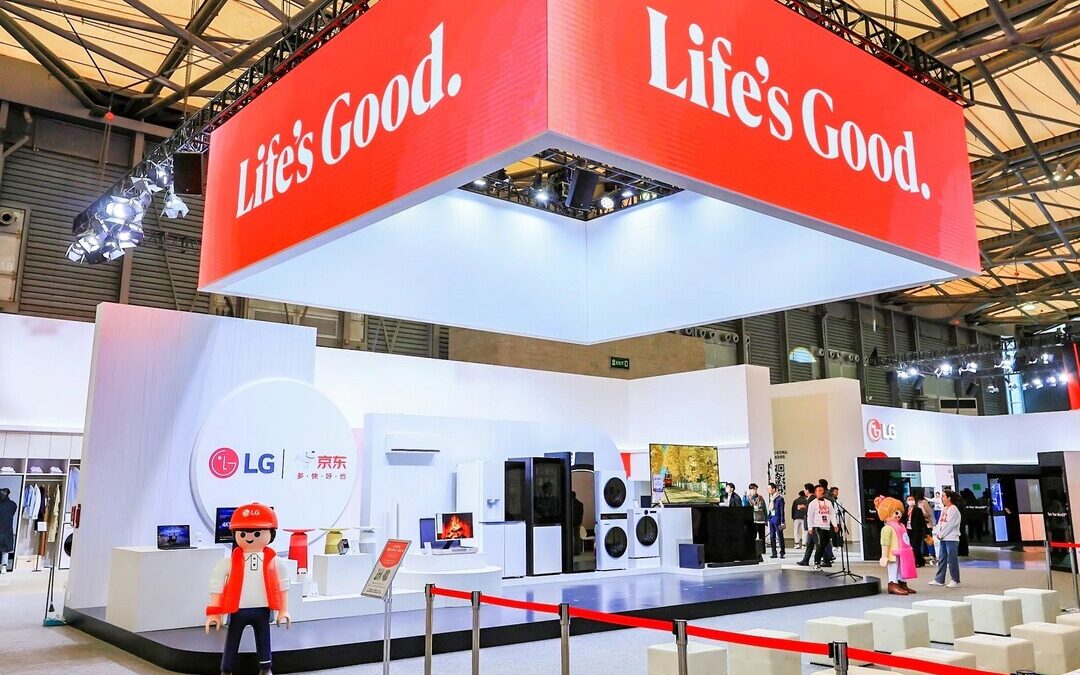LG Electronics Doubles Down on ESG to Deliver a ‘Better Life for All’
The South Korean giant sets bold ESG goals for 2030 with a focus on climate, inclusion, innovation and circular economy.
LG Electronics is stepping up its sustainability drive, aligning long-term climate goals and inclusive innovation with bold business transformation, as outlined in its recent 2024–2025 Sustainability Report, “Better Life for All.”
The South Korean tech giant recorded its highest-ever annual revenue of KRW 87.7 trillion ($63.81 billion) in 2024 and ranked in Interbrand’s “Global Top 100” while simultaneously deepening commitments to ESG leadership.
Navigating Disruption with Optimism
“Amid prolonged geopolitical uncertainties and tightening global spending, LG Electronics is accelerating its transformation into a ‘Life Solution Company,’” said CEO William Cho in the report. “We remain committed to practicing sustainable management for a ‘Better Life for All.’”
Cho emphasized the company’s “3Cs,” or carbon neutrality, circularity and clean technology, and “3Ds,” or decent workplace, diversity & inclusion, design for all, as pillars of its ESG strategy.
“We set clear annual targets in each area and are rigorously tracking our progress year over year,” added Cho.
The report is based on key sustainability management activities and performance from January 2024 to December 2024, with some major activities extending through the first half of 2025.
ESG Overview: Strategy in Action
LG’s ESG framework is anchored in the 3C and 3D strategies. Under the 3Cs, the company targets carbon neutrality at the production stage by 2030 and 100 percent renewable energy by 2050. The 3Ds focus on creating inclusive, safe, and innovative workplaces and products.
Materiality assessments using the double materiality methodology identified 15 key topics, including climate change, information security, product sustainability, and labor rights. ESG performance is managed at the board level through the ESG Committee, ensuring strategic alignment.
Environmental: Net Zero in Sight
Climate Change Response
In 2024, LG’s Scope 1 or direct and Scope 2 or indirect emissions totaled 910,000 tons of carbon dioxide equivalent, bringing the company close to its 2030 goal of 878,000 tons.
The early achievement of this goal was driven by the proactive adoption of energy-efficient equipment and carbon-reduction technologies across multiple production processes.
By 2030, LG aims to cut Scope 1 and 2 emissions by 54.6 percent and Scope 3 emissions from product use by 20 percent compared to its 2017 levels.
Scope 1 is the type of greenhouse gas emissions a company makes directly, while Scope 2 is what a company is indirectly responsible for, such as what is needed to provide electricity or heating.
Scope 3, on the other hand, is all encompassing for a company’s products — not just what the company created to make the products, but also emissions spewed when the product is used.
LG’s high-efficiency HVAC systems, like the AI-powered Multi V i, also helped clinch multiple honors, including the “Energy Grand Prize” and AHRI awards. “Our high-efficiency HVAC solutions…are helping to lower emissions through customized thermal management,” Cho said.
Circularity and Eco Innovation
The company maintained a 97.4 percent waste recycling rate and reached a cumulative total of 5.01 million tons of collected e-waste and 188,000 tons of recycled plastic. Nine global sites have secured Zero Waste to Landfill certification.
Innovations like the myCup tumbler washer and water-soluble glass powder for ocean restoration signal LG’s intent to lead in clean tech. The latter technology, tested in Antarctica, boosts marine biodiversity by tripling growth rates of halophytes and algae.
Social: Building a Workforce and Ecosystem for Inclusion
Human Rights and Labor Practices
All production sites are ISO 45001-certified, with 90 percent registering zero critical non-conformities. Human rights training reached 45,494 employees, with impact assessments completed across all global sites.
LG aims to boost the employment rate for people with disabilities in Korea to 3.5 percent and female representation globally to 25.5 percent by 2030. In 2024, those figures stood at 2.6 percent and 22.1 percent, respectively.
Safety, Health and Supply Chain
Zero serious accidents were recorded, with over 37,000 employees completing occupational safety training. In the supply chain, LG achieved 100 percent Responsible Minerals Assurance Process-certified smelter use and maintained Responsible Business Alliance audit non-conformities among suppliers at just 1.1 percent.
Customer and Community Engagement
Accessibility remains a central customer value. LG introduced 13 comfort kit models and voice-recognition features in 11 product lines. “Improving accessibility is a core customer value,” Cho said.
The company recorded 1,304 global sign language consultations and 136,806 beneficiaries from ESG-linked community programs in 2024. Cumulative social beneficiaries from 2009 to 2024 exceeded 4.98 million.
Governance: ESG Embedded at the Core
Corporate Governance and Compliance
The Board of Directors convened nine times in 2024 with 100 percent attendance and maintained a majority of independent directors. Ethics training reached 100 percent completion among employees, and compliance violations were handled with a zero-tolerance policy.
Risk Management and Cybersecurity
The Enterprise Risk Management Committee, chaired by the Chief Risk Officer, oversees financial, ESG, and operational risks. Scenario-based climate risk assessments — spanning flooding to regulatory shocks — are now embedded into facility planning and investment decisions.
Cybersecurity is reinforced through annual simulations, bug bounty programs, and a “security-by-design” approach, especially relevant in smart home and digital services expansion.
ESG Data: Measuring What Matters
LG’s data infrastructure underpins its sustainability tracking. In 2024, it received numerous accolades, including:
- S&P Global CSA: Top 1 percent rating for two consecutive years
- DJSI World Index: Listed for 13 straight years
- Green Builder: Ranked No. 1 Sustainable Brand
- IDEA Awards: Gold Prize for the LG Comfort Kit
All domestic and overseas production sites are certified under ISO 14001, ISO 45001, and ISO 50001, reflecting rigorous Safety Health Environment Energy Quality standards.
Cho concluded with a vision beyond numbers: “We boldly pursue sustainable growth with the spirit of a ‘Brave Optimist.’ Our efforts won’t stop until we achieve a Better Life for All.”
Nirmal Menon
Related posts
Subscribe
Error: Contact form not found.


